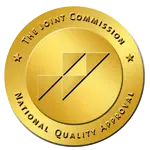No, heroin is not a stimulant drug. It is an opioid, which classifies it as a depressant. This distinction is essential for understanding the nature of heroin addiction and the approach needed for effective treatment. Depressants, including opioids like heroin, slow down brain activity and bodily functions, leading to effects such as drowsiness, relaxation, and pain relief. In contrast, stimulants speed up these processes. Recognizing heroin as a depressant is crucial for anyone looking to grasp the complexities of substance abuse and addiction.
At Pathways Recovery Center, we are dedicated to addressing the challenges of heroin addiction with comprehensive care tailored to each individual’s needs. Our programs are designed to support individuals through every step of their recovery journey, from detoxification to residential inpatient care. Understanding the true nature of heroin as a depressant is the first step in demystifying its effects and developing an effective treatment plan.
In the realm of substance abuse and addiction treatment, understanding the distinction between stimulants and depressants is crucial. These two broad categories of drugs have opposite effects on the central nervous system, and recognizing these differences is key to understanding how various substances impact the body and mind.
Stimulants, as the name suggests, stimulate the central nervous system. They increase alertness, boost energy, and elevate mood, often leading to a temporary sense of heightened well-being. Common examples of stimulants include cocaine, methamphetamine, and certain prescription drugs like Adderall and Ritalin. These substances increase dopamine levels in the brain, which enhances feelings of pleasure and excitement. However, the increased heart rate, blood pressure, and alertness come with significant risks, including the potential for addiction, heart problems, and aggressive behaviors.
Depressants, on the other hand, slow down brain activity. They produce calming effects, reduce anxiety, and help with sleep. This category includes alcohol, benzodiazepines (like Valium and Xanax), and opioids, including heroin. Depressants increase the activity of gamma-aminobutyric acid (GABA), a neurotransmitter that reduces excitability in the brain. While they can offer relief from anxiety and tension, their misuse can lead to severe consequences, including respiratory depression, overdose, and addiction.
The impact of these drugs on the body’s neurotransmitter systems explains their contrasting effects on mood, cognition, and physical activity. Understanding these differences is vital for anyone seeking to comprehend the complexities of substance abuse and the necessity of targeted treatment approaches.
Given the fundamental differences between stimulants and depressants, it’s crucial to classify heroin accurately to address its abuse effectively. Despite some misconceptions, heroin is a depressant. It is an opioid that acts on the brain’s opioid receptors, slowing down the body’s physiological functions. Upon entering the brain, heroin is converted back into morphine, which then binds to these receptors, affecting the perception of pain and pleasure.
The immediate effects of heroin use include a rush of euphoria, followed by a state of drowsiness and relaxation. This is indicative of its depressant effects on the central nervous system. Users may experience slowed breathing and heart rate, reduced levels of consciousness, and a decrease in physical pain. These effects make heroin particularly dangerous, as the risk of overdose is high. An overdose can lead to severe respiratory depression, coma, and death.
Understanding that heroin is a depressant is critical for addressing its addiction. Treatment focuses on managing withdrawal symptoms, which can be intense and include pain, gastrointestinal distress, and severe cravings. Pathways Recovery Center’s comprehensive approach to detoxification and inpatient care is designed to support individuals through the withdrawal process, address the psychological aspects of addiction, and help individuals build the skills necessary for long-term recovery.
Recognizing the nature of heroin as a depressant rather than a stimulant underscores the importance of targeted treatment strategies. These strategies must address the specific effects of heroin on the brain and body, emphasizing the need for a supportive, medically supervised environment during detoxification and recovery. At Pathways Recovery Center, we are dedicated to providing this level of care, guiding our clients toward a life free from heroin addiction.
Heroin is an opioid, not a stimulant. Opioids are a class of drugs that encompass not only heroin but also prescription pain relievers such as oxycodone, hydrocodone, morphine, and fentanyl. Known for their potent pain-relieving properties, these substances act on the brain and body in profound ways. Heroin, specifically derived from morphine, rapidly enters the brain upon ingestion. It then reverts back to morphine and binds to opioid receptors scattered throughout the brain and body. This process triggers the drug’s notorious effects: an initial surge of euphoria known as a “rush,” accompanied by a warm flushing of the skin, dry mouth, and a heavy sensation in the limbs. As these immediate effects wane, the user often falls into a state of drowsiness that can last several hours, during which mental function becomes clouded and both heart rate and breathing slow down significantly.
For those unfamiliar with this drug, one may wonder, “what does heroin look like?” Heroin typically appears as a white or brownish powder or as a black sticky substance known as “black tar heroin.” Each form has distinct physical characteristics that can help in its identification, which is crucial for early detection and intervention in cases of addiction.
The impact of heroin and opioid misuse is staggering, extending far beyond the immediate effects on individual users to pose a significant public health challenge. According to the National Institute on Drug Abuse (NIDA), drug overdose deaths involving heroin escalated from 1,960 in 1999 to a peak of 15,482 in 2017, before showing a decrease to 13,165 deaths in 2020 and further to 9,173 deaths in 2021. Additionally, the data reveals a concerning trend: an increase in deaths involving heroin in combination with synthetic opioids other than methadone. This alarming trend underscores the critical need for effective treatment and intervention strategies to combat the opioid crisis.
These statistics not only highlight the severe and often fatal risks associated with heroin use but also underscore the importance of comprehensive understanding and intervention. The potent effects of heroin and the broader class of opioids can lead to devastating consequences, including fatal overdose, underscoring the imperative for accessible, effective addiction treatment services. At Pathways Recovery Center, we are acutely aware of these challenges and are committed to providing the support and care needed to address heroin and opioid addiction, guiding individuals on their journey towards recovery.
Stimulants, on the other hand, are a class of drugs that increase alertness, attention, and energy, as well as elevate blood pressure, heart rate, and respiration. Common stimulants include cocaine, methamphetamine, and prescription medications such as Adderall and Ritalin. Given the depressant effects of heroin on the central nervous system, it is clear that heroin does not fit within the stimulant category.
Heroin not only poses a high risk of addiction and overdose but also a myriad of health issues. These can range from immediate effects such as nausea and vomiting to long-term health consequences including the risk of infectious diseases, liver and kidney disease, and lung complications. The manner in which heroin is used—whether injected, snorted, or smoked—can also contribute to its detrimental health effects, including the potential for HIV, hepatitis B and C transmission through shared needles.
At Pathways Recovery Center, we understand the complexities of heroin addiction. Our residential treatment center is designed to provide a supportive and healing environment for individuals seeking to overcome substance abuse. We offer a comprehensive approach that encompasses both detoxification and residential inpatient care, tailored to meet the unique needs of each individual.
The first step in the treatment process for heroin addiction is detoxification. This medically supervised detox ensures that individuals safely withdraw from heroin, managing withdrawal symptoms in a supportive environment. Our medical team provides round-the-clock care, employing medication-assisted treatment (MAT) when appropriate to alleviate withdrawal symptoms and cravings, laying the groundwork for a successful recovery journey. After entering our detoxification program, individuals begin the challenging journey of withdrawing from heroin. Managing heroin withdrawal symptoms effectively is crucial for a successful detoxification process. Our medical team provides comprehensive support to alleviate these symptoms, ensuring a safer and more comfortable transition into sobriety.
Following detoxification, individuals transition into our residential inpatient care program. This phase of treatment focuses on the psychological, social, and behavioral aspects of addiction. Through a combination of individual therapy, group sessions, and family counseling, our program addresses the root causes of addiction, equipping individuals with the tools they need to maintain long-term sobriety. Our holistic approach also includes nutritional counseling, physical fitness, and mindfulness practices to support overall health and well-being.
Recovery from heroin addiction is a challenging but incredibly rewarding journey. At Pathways Recovery Center, we are committed to providing compassionate care and comprehensive support every step of the way. By dispelling myths such as “is heroin a stimulant” and focusing on evidence-based treatments, we help individuals build a solid foundation for recovery.
If you or a loved one is grappling with heroin addiction, Pathways Recovery Center is here to help. Our team of experts understands the challenges you face and the courage it takes to embark on the path to recovery. We are dedicated to providing the highest level of care, tailored to the unique needs of each individual we serve. To learn more about our programs or to start your journey towards recovery, contact us today. Together, we can overcome addiction and pave the way to a healthier, more fulfilling life.








